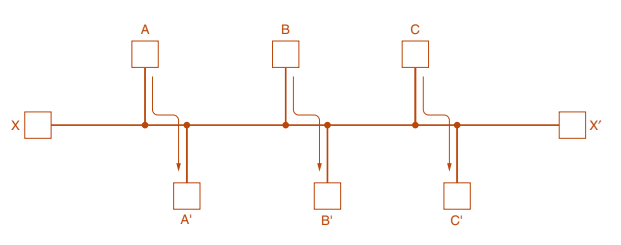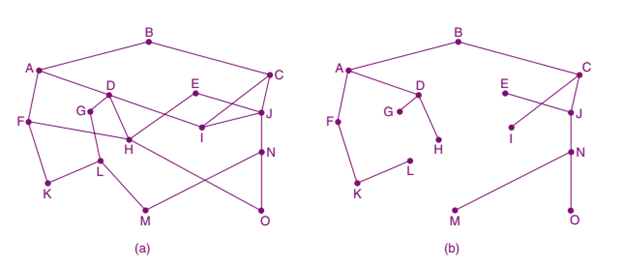Routing Algorithms in Network Layer Design
Routing algorithms play a crucial role in the network layer, responsible for directing packets from a source machine to a destination machine. In most network scenarios, packets must traverse multiple hops, making routing a fundamental aspect of network communication. This section delves into the various types of routing algorithms, their characteristics, and the principles that guide their design.

Overview of Routing and Forwarding
Routing refers to the process of determining the optimal path for data packets to travel through a network, while forwarding is the actual transmission of packets based on the routing decisions made. In networks that utilize datagrams, routing decisions are made for each incoming packet, as the best route may change frequently. Conversely, in networks using virtual circuits, routing decisions are established when a new connection is set up, allowing subsequent packets to follow the predetermined path.
Key Properties of Routing Algorithms
Effective routing algorithms should exhibit several desirable properties:
1.Correctness: The algorithm must accurately determine the best routes for packet delivery.
2.Simplicity: The routing process should be straightforward to implement and understand.
3.Robustness: The algorithm should handle hardware and software failures gracefully, maintaining network functionality without requiring a complete reboot.
4.Stability: A stable routing algorithm converges to a fixed set of paths and remains there, avoiding oscillations that can disrupt communication.
5.Fairness: The algorithm should ensure equitable resource allocation among different connections, preventing any single connection from monopolizing bandwidth.
6.Efficiency: The routing process should optimize network resource usage, minimizing delays and maximizing throughput.
Trade-offs in Routing Objectives
Routing algorithms often face conflicting objectives, particularly between fairness and efficiency. For instance, maximizing overall network throughput may require limiting traffic on certain paths, which could be perceived as unfair by individual connections. Additionally, optimizing for minimal packet delay may conflict with maximizing total throughput, as operating near network capacity can lead to increased queuing delays. As a result, many networks aim to minimize the distance packets must travel or reduce the number of hops, which can enhance both delay and throughput.
Types of Routing Algorithms
Routing algorithms can be categorized into two primary classes: nonadaptive and adaptive.
→ Nonadaptive Algorithms: These algorithms do not adjust their routing decisions based on current network conditions. Instead, routes are computed in advance and remain static until the network is rebooted. This approach is suitable for networks with predictable traffic patterns but lacks responsiveness to failures or changes in topology.
→ Adaptive Algorithms: In contrast, adaptive algorithms modify their routing decisions based on real-time changes in network topology and traffic conditions. These dynamic algorithms can gather information from various sources, such as local routers or the entire network, and adjust routes accordingly. They may change routes based on topology changes or periodically based on traffic load.
The Optimality Principle
A foundational concept in routing is the optimality principle, which states that if a router is on the optimal path from one point to another, then the optimal path from that router to the final destination must also follow the same route. This principle leads to the formation of sink trees, which represent the optimal routes from all sources to a given destination. Sink trees are characterized by their lack of loops, ensuring that packets are delivered within a finite number of hops.

Conclusion
Routing algorithms are essential for efficient and reliable packet delivery in networks. By understanding the properties and classifications of these algorithms, network designers can create systems that effectively balance the competing demands of correctness, efficiency, fairness, and robustness. The optimality principle and the concept of sink trees provide a framework for evaluating and improving routing strategies, ensuring that networks can adapt to changing conditions while maintaining high performance.
